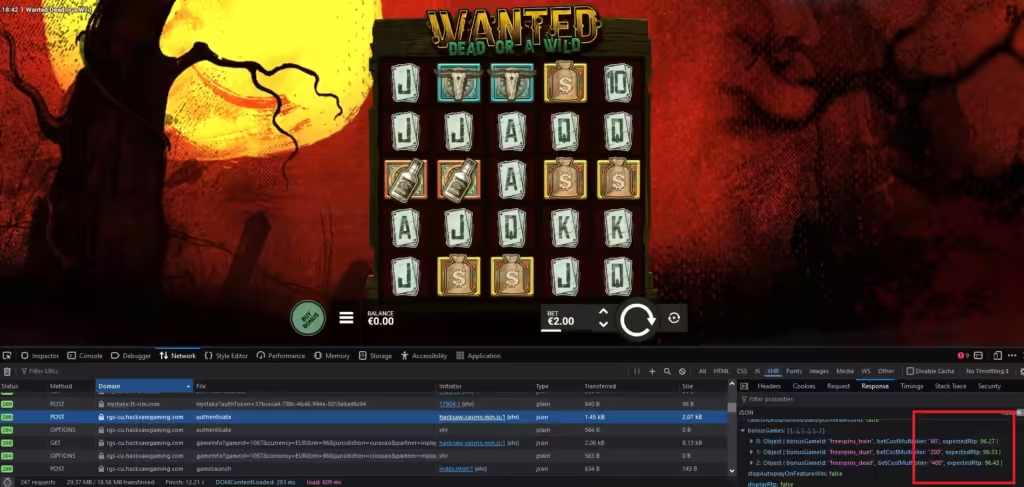Need to create slot reviews fast without sacrificing quality? Learn the insider tips to analyze games efficiently and craft comprehensive reviews in minutes.
Know Your Priorities
Let’s first give you the checklist. Here are the main priorities that you must cover in any slot game review (not necessarily in this order).
- Details: The details could be arranged in a table where you list the provider, RTP, variance, minimum and maximum bet size, theme, etc. about the slot game.
- Theme and Design: First impressions matter. Does the game grab your attention with stunning graphics? Is it just a copy-paste job and there’s a better alternative within the same theme and RTP range? Does the game feel like a relic from the early days of the internet?
- Gameplay: Cover the mechanics of the slot game here. This includes all features such as what symbols are there, which bonus rounds are there, how to trigger the bonus rounds, the availability/lack of a progressive jackpot, and so on.
- Payout & Volatility: Let’s talk money! What kind of payouts can players expect? Is it a high-volatility slot with the potential for massive wins but also long dry spells? Or is it a low-volatility game with frequent but smaller payouts? You need to give your readers a proper risk-to-reward profile of the slot game in question.
- Mobile Experience: The majority of gamers are on mobile. On the other hand, the majority of writers (including those who write reviews) are on laptops or desktops. Your review should be conducted from a mobile-first perspective. At the very least, you should give the game a spin on mobile once before you publish your review.
- RTP: Quickly cover if the RTP is fair and competitive. Some games have a suspiciously low RTP, signaling a potential rip-off. If there’s not much to write here, you can include it in the previous section. At least, mention the RTP and how it compares to the industry average. If there’s variable RTP, it’s imperative to tell your readers to check the RTP supplied by the casino for that game.
Many games today have variable RTP, meaning a casino can choose which RTP version they want. For example, Play ‘n GO’s Book of Dead has 5 variations — 96.21%, 94.25%, 91.25%, 87.25%, and 84.18%. Several casinos give the exact information on their page, but it’s not rare for a casino to choose the 84.18% version without mentioning it. As a reviewer, it’s your job to let your readers know if a slot has these variable RTPs. After reading your review, your reader might sign up somewhere expecting a 96%+ RTP to see what all the rage around Book of Dead is about, only to have a terrible time with a subpar 84% RTP.
So, now that you know what sections to cover in a casino slot review, make a template. More on this in the “Structure Your Review” section further below.
Gather Key Info Fast
The game provider’s website is your go-to source for official information. Check out their game pages, paytables, and descriptions to gather key details about the game’s features, RTP, volatility, and more.
This is your chance to get the facts straight from the horse’s mouth, so to speak. But a lot of times, the official page barely has any information. Worse yet, some providers don’t publish detailed RTP data for their games.
First, look for any data or documents the provider has on the RTPs of their games. Many of them do offer a detailed breakdown of the RTPs of their games. Some also provide documents for each individual game, for example this PPT presentation by Pragmatic Play for their game Release the Kraken 2.
To find out RTP information about a game that doesn’t advertise it, there are a few methods you can try. If the basic stuff doesn’t work (look for documentation, look at other reviews, or contact the game provider), you can launch developer tools, check the data being fetched from the provider’s server, and find out the RTP value of the game. Here’s a guide on that from Casinos in Canada co-founder Liudmila Schirmer. In fact, by just digging around a bit, you can get a lot of information about the game. For example, here’s the expected RTP as published by Hacksaw for the bonus rounds in Wanter Dead or a Wild:

There’s no substitute for firsthand experience. As a slot reviewer, you should only recommend the games that you play. If you’re writing a lighter review where you only cover the basics and add in your experiences, you might want to use the demo mode. Taking the game for a spin will give you a feel for the gameplay, graphics, sound effects, and bonus features.
Pay attention to the overall user experience. Is it smooth and enjoyable? Or is it frustrating and buggy? Your personal experience will add authenticity and depth to your review.
Also, look into player feedback. What are other players saying about the game? Scour online forums, review sites, and social media to see what the buzz is.
Look for common themes and recurring feedback. Are players raving about the bonus rounds or complaining about the lack of free spins? These can help you identify the game’s strengths and weaknesses, ultimately making your review more balanced.
Structure Your Review
Okay, so now that you have a good idea about what sections to add (feel free to add more sections) and how to find key information, it’s time to create your own template. We’ll not explain the exact process. It’s basic and every writer will know how to make a template anyway.
But we are going to take it one step further and discuss structuring the reviews. Basically, how do you lay it all out for maximum value to the reader and retention? As it turns out, a slot review should be the perfect balance between narration (storied from start to finish) and objective (only the key points).
Once you know the ideal structure of such a review, you can create a better template that will make your reviewing process significantly faster.
- Introduction (Engaging hook, brief game overview): Think of your introduction as the slot machine’s flashy intro screen – it needs to grab attention and entice players to spin those reels (or in this case, keep reading). Start with a catchy hook, a question, or a bold statement that piques curiosity. Then, provide a brief overview of the game, highlighting its theme, developer, and key features.
- Gameplay & Features (Mechanics, bonus rounds, special symbols): This is where you dive into the nitty-gritty of the game. Explain the mechanics, betting options, and paylines. Describe the bonus rounds, free spins, and any special symbols or features that make the game unique.
- Graphics & Sound (Visual appeal, audio quality, overall atmosphere): Slots are all about the sensory experience. Describe the game’s graphics, animations, and sound effects. Does it create an immersive atmosphere that transports players to another world? Or does it feel flat and uninspired?
- Payouts & Volatility (Potential wins, risk level, RTP): Let’s talk numbers! Break down the game’s payout potential, volatility, and RTP. Explain what these terms mean and how they impact the player’s experience. Is it a high-risk, high-reward game with the potential for massive wins? Or is it a more casual, low-volatility slot with frequent but smaller payouts?
- Conclusion (Final thoughts, recommendation, target audience): Wrap up your review with a concise conclusion that summarizes your key points and offers a final recommendation. Is this a game you’d recommend to your readers? If so, who is it best suited for? The idea is to leave your readers with a clear takeaway and a sense of whether this slot game is worth their time and money.
Tips for Speed & Clarity
Let’s leave you with some tips.
- Use Templates: Create a reusable review structure to save time. Templates are your secret weapon for writing slot reviews at lightning speed. Create a basic template that you can adapt for each new game. This will save you time on structuring your content and ensure consistency across your reviews.
- Concise Language: Focus on key points, avoid fluff. Nobody wants to read a rambling, wordy review. Get to the point quickly and focus on the most important information. Use clear, concise language and avoid unnecessary filler words or phrases. Your readers are busy people. They want to get the essential details about the game without having to wade through a sea of text.
- Strong Verbs: Keep your writing active and engaging. Ditch the passive voice and use the power of strong verbs. Active voice makes your writing more dynamic, engaging, and easier to read. It also helps you avoid wordiness and get straight to the point.
- Bullet Points: Highlight important features and information. Bullet points are your friends! Use them to highlight key features, bonus rounds, or other important information about the game. They break up the text, making it easier to scan and digest, and they draw attention to the most important details.




